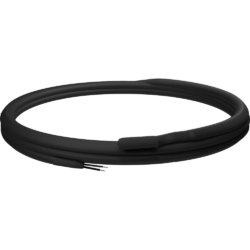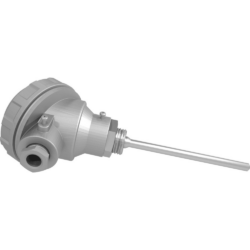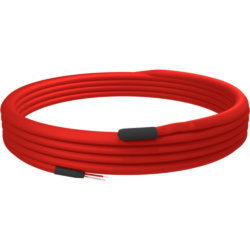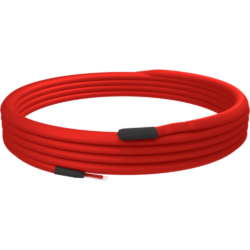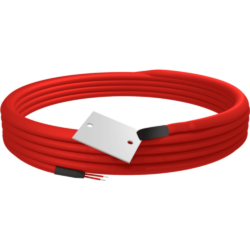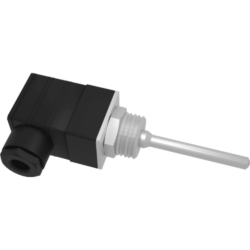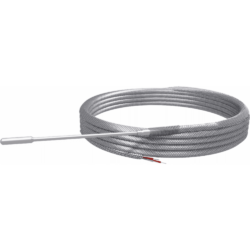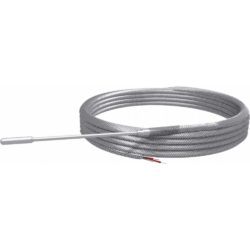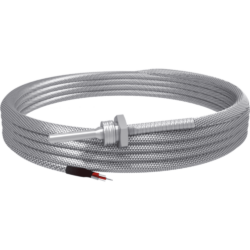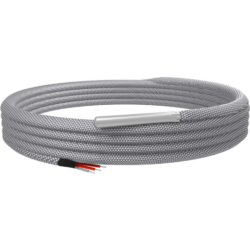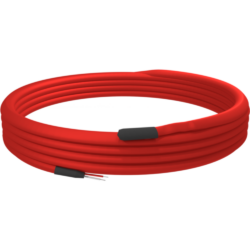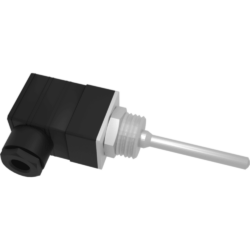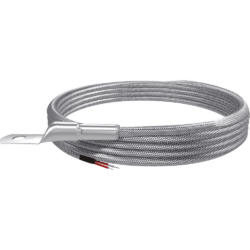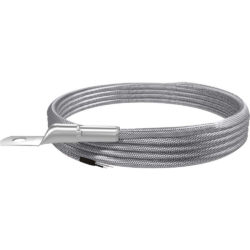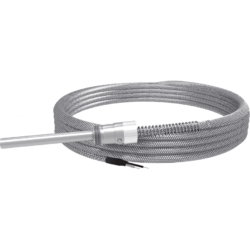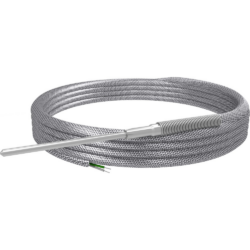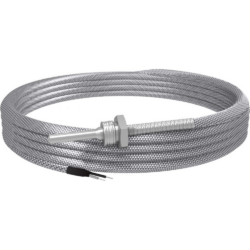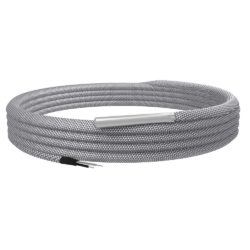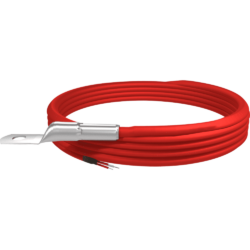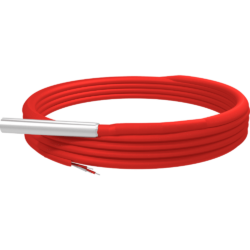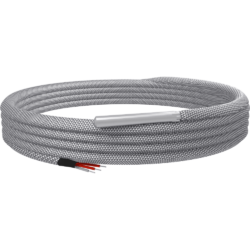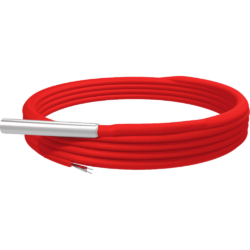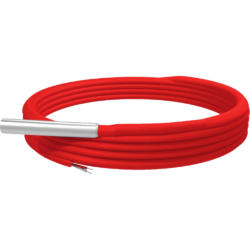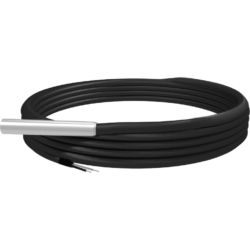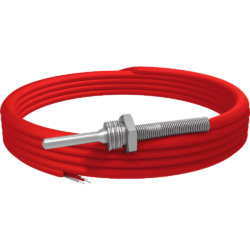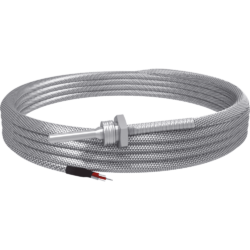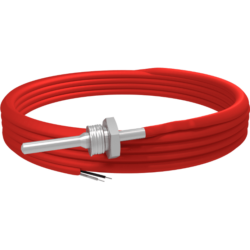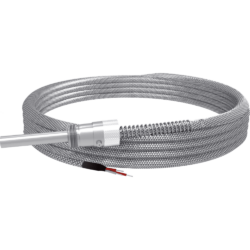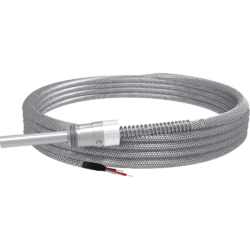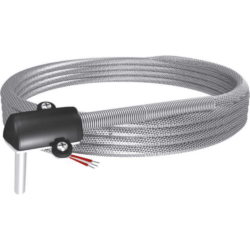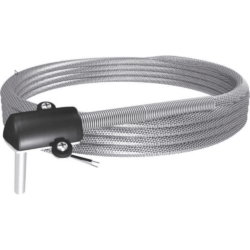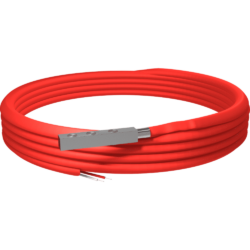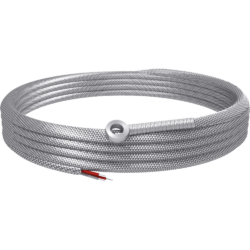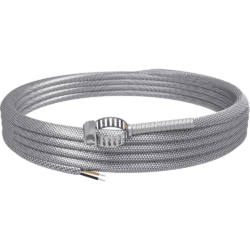Temperature sensors
Temperature sensors play an important role in temperature measurement in various areas. High-quality sensors are crucial in order to achieve the desired level of precision. With our product range, we offer a wide and reliable selection of professional sensors that fulfil various needs and requirements.
Type
Type
Temperature range
Connection
-
EMKO NTC-M5L20.K1.5 NTC temperature sensor
- 10,55 € plus VAT.
-
excl. VAT
-
EMKO RTKRT Pt100 temperature sensor with sensor head and 4-20 mA analogue signal output
- from 76,10 € plus VAT.
-
excl. VAT
-
EMKO PTC-K PTC temperature sensor fast response without immersion sleeve
- 24,61 € plus VAT.
-
excl. VAT
-
EMKO RT SI+SI (1000) Pt1000 temperature sensor fast response without immersion sleeve
- 22,85 € plus VAT.
-
excl. VAT
-
EMKO RT SI+SI Pt100 temperature sensor fast response without thermowell
- 21,09 € plus VAT.
-
excl. VAT
-
EMKO RT T+T Pt100 surface sensor with mounting plate for attachment to surfaces
- 73,82 € plus VAT.
-
excl. VAT
-
EMKO RTIR 3 wire Pt100 temperature sensor with sensor head
- 68,33 € plus VAT.
-
excl. VAT
-
EMKO RTIR-M06-L050.1 3 wire (1000) Pt1000 temperature probe with sensor head
- 73,82 € plus VAT.
-
excl. VAT
-
EMKO RTMS (1000) Pt1000 temperature sensor mineral insulated with immersion sleeve
- 49,21 € plus VAT.
-
excl. VAT
-
EMKO RTMS Pt100 temperature sensor mineral insulated with thermowell
- 46,61 € plus VAT.
-
excl. VAT
-
EMKO RTR PT1000 temperature sensor with thread and cable sheath made of fibreglass braiding
- 41,90 € plus VAT.
-
excl. VAT
-
EMKO RTSM (1000) Pt1000 temperature sensor with immersion sleeve and cable sheath made of fibreglass braiding
- from 24,75 € plus VAT.
-
excl. VAT
-
EMKO TC.J SI+SI type J temperature sensor fast response without immersion sleeve
- 15,12 € plus VAT.
-
excl. VAT
-
EMKO TC.K SI+SI Type K temperature sensor fast response without immersion sleeve
- 17,58 € plus VAT.
-
excl. VAT
-
EMKO TCIR.J Type J temperature sensor with sensor head
- 65,03 € plus VAT.
-
excl. VAT
-
EMKO TCIR.K Type K temperature sensor with sensor head
- 64,61 € plus VAT.
-
excl. VAT
-
EMKO RT (1000).SKP5 Pt1000 surface probe with hole for screw mounting on surfaces
- 29,88 € plus VAT.
-
excl. VAT
-
EMKO TC.J.SKP5 SKP5 type J surface probe with hole for screw mounting on surfaces
- from 14,06 € plus VAT.
-
excl. VAT
-
EMKO TC.K thermocouple with bayonet connection for quick mounting for industrial applications
- 24,61 € plus VAT.
-
excl. VAT
-
EMKO TC.K.SKP5 Type K surface sensor with hole for screw mounting on surfaces
- from 17,58 € plus VAT.
-
excl. VAT
-
EMKO TCMS.J type J thermocouple immersion sensor mineral insulated
- 41,62 € plus VAT.
-
excl. VAT
-
EMKO TCMS.K type K thermocouple immersion sensor mineral insulated
- 50,09 € plus VAT.
-
excl. VAT
-
EMKO TCR.J type J thermocouple with thread for screw mounting
- from 30,86 € plus VAT.
-
excl. VAT
-
EMKO TCR.K type K thermocouple with thread for screw mounting
- 33,78 € plus VAT.
-
excl. VAT
-
EMKO TCSM.J Type J thermocouple immersion sensor
- from 14,94 € plus VAT.
-
excl. VAT
-
EMKO TCSM.K Type K Thermocouple Immersion Sensor
- from 15,82 € plus VAT.
-
excl. VAT
-
RT SI+SI (1000).SKP5 Pt1000 surface probe with hole for screw mounting on surfaces
- 26,36 € plus VAT.
-
excl. VAT
-
EMKO RTS Pt100 temperature sensor with immersion sleeve
- from 21,09 € plus VAT.
-
excl. VAT
-
EMKO RTSM Pt100 temperature sensor with immersion sleeve and cable sheath made of fibreglass braiding
- from 22,41 € plus VAT.
-
excl. VAT
-
EMKO RTS.1000 Pt1000 resistance thermometer
- from 22,85 € plus VAT.
-
excl. VAT
-
EMKO PTC PTC resistance thermometer with stainless steel sleeve
- 15,82 € plus VAT.
-
excl. VAT
-
EMKO TCS.J Type J thermocouple immersion sensor
- from 13,18 € plus VAT.
-
excl. VAT
-
EMKO TCS.K Type K thermocouple immersion sensor
- from 14,06 € plus VAT.
-
excl. VAT
-
EMKO RTR Si+Si Pt100 temperature sensor with thread and silicone cable
- from 31,18 € plus VAT.
-
excl. VAT
-
EMKO RTR Pt100 temperature sensor with thread and cable sheath made of fibreglass braiding
- from 35,15 € plus VAT.
-
excl. VAT
-
EMKO PTCS PTC temperature sensor with thread and silicone cable
- from 17,75 € plus VAT.
-
excl. VAT
-
EMKO RT Pt100 bayonet sensor for quick mounting for industrial applications
- from 25,05 € plus VAT.
-
excl. VAT
-
EMKO RT.1000 Pt1000 bayonet probe for quick mounting for industrial applications
- 27,68 € plus VAT.
-
excl. VAT
-
EMKO TC.J type J thermocouple with bayonet connection for quick mounting for industrial applications
- from 14,06 € plus VAT.
-
excl. VAT
-
EMKO RTL Pt100 temperature sensor especially for mounting on enclosures
- 35,36 € plus VAT.
-
excl. VAT
-
EMKO TCL type J thermocouple especially for mounting on enclosures
- 26,50 € plus VAT.
-
excl. VAT
-
EMKO RTS-M08X08 Pt100 surface sensor with magnets integrated in the sensor head for mounting on metallic surfaces
- from 34,27 € plus VAT.
-
excl. VAT
-
EMKO RT SI+SI.SKP5 Pt100 surface sensor with hole for screw mounting on surfaces
- from 21,09 € plus VAT.
-
excl. VAT
-
EMKO RT SKP5 Pt100 surface sensor with fibreglass braided cable sheath and hole for screw mounting on surfaces
- from 21,97 € plus VAT.
-
excl. VAT
-
EMKO RT-M05X05 Pt100 surface sensor with mounting ring and tension spring
- 31,99 € plus VAT.
-
excl. VAT
-
EMKO TC.J.KE.19X26 type J thermocouple pipe contact sensor with screw clamp
- 24,61 € plus VAT.
-
excl. VAT
Use of temperature sensors
Temperature sensors are used to measure the temperature. In conjunction with a Temperature controller can be used to monitor and control the temperature of gases or liquids. The sensors are available in resistance thermometer and thermocouple versions and convert the temperature into a measurable signal. The most common measurement methods are based on electrical resistance or electrical voltage.
Measuring principle
Resistance thermometers use the electrical resistance of metals to measure temperature. These are often used at temperatures from -200 °C to +850 °C. Resistance thermometers are particularly favoured at low temperatures, as their accuracy is higher than that of thermocouples. Thermocouples use the electrical voltage from a pair of different metals to measure the temperature and are used at high temperatures.
Measuring accuracy for temperature sensors
Standard temperature sensors are used for temperatures up to +500°C and special sensors are used for temperatures above +500°C. The sensor length should be taken into account according to the maximum immersion depth, as measurement errors can be caused by heat transfer along the thermowell. For an accurate measurement, the immersion depth of the sensor should not be less than 10 times the outer diameter. The flow velocity of the medium in which the sensor is located is also a factor that influences the measurement sensitivity. In general, R/T should be perpendicular to the direction of flow.
Designs
Depending on the application and mounting requirements, temperature sensors are available in different designs. With an immersion sensor, the sensor is encased in a thermowell. The sensor is immersed in the gas or liquid to be measured.
Bayonet probe
Bayonet sensors are fitted with a bayonet catch and a compression spring. With this fastening system, the sensor can be installed quickly and replaced quickly in the event of a defect. The installation length is set using the compression spring. Bayonet sensors are used in tools or injection moulding machines, for example.
Surface sensor
Surface sensors are equipped with a flat sensor head which is attached to a surface by means of screw mounting. These sensors are used to measure the temperature of surfaces or housing walls, for example.
Threaded probe
With a threaded sensor, the sensor head is equipped with a thread for fastening. With this type of mounting, the sensor is attached to the outside of an enclosure, for example, to measure the temperature inside the enclosure.
Angle sensor
With an angle sensor, the sensor head is arranged at a 90° angle to the fastening device. Similar to a threaded sensor, it is attached to the outside of an enclosure to measure the temperature inside. Due to the 90° angle arrangement, this temperature sensor can be installed very flat. It is attached by means of screw mounting.
Magnetic sensor
The sensor head of a magnetic sensor is magnetic. This offers the advantage of attaching the sensor to metallic surfaces without having to drill holes for screw mounting. Furthermore, the sensor with magnetic mounting can also be attached only temporarily or at different locations.
Pipe contact sensor
The sensor head of pipe contact sensors is fitted with a screw clamp and is attached to pipes or rods using this.
Areas of application
Temperature sensors are used in a wide range of applications. In the industrial sector in particular, they are used to control processes such as ovens or to control the room temperature, for example in cold rooms. Here, the measured temperature value is transmitted from the sensor to a temperature controller which controls the system. Another area of application is the monitoring of machines to protect them from damage due to overheating. In production processes, materials that are to have a certain temperature are also measured with a temperature sensor and the temperature is controlled accordingly. In injection moulding machines for moulding plastic parts, for example, the plastic granulate is heated to the appropriate setpoint in order to liquefy it and then pressed into the mould. In thermoforming, on the other hand, the material to be moulded is heated and drawn onto a mould using compressed air or a vacuum. Here too, the temperature of the moulding material is monitored using a temperature sensor.

